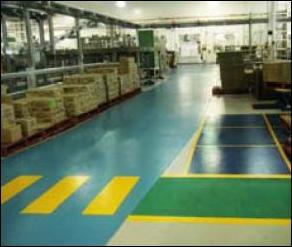Body
Editor's note: In this second in a series of articles on workplace visuality, Gwendolyn Galsworth, Ph.D., author of Work That Makes Sense (Visual Lean Enterprise Press, 2010) and Visual Workplace/Visual Thinking (Visual-Lean Enterprise Press, 2005), and recognized visual expert, shows us how visual devices let the workplace speak.
 |
|
|
Brilliant floor borders in this massive food manufacturer in Australia show us the walk lanes while alerting forklift drivers to pedestrian traffic.
|
…
Want to continue?
Log in or create a FREE account.
By logging in you agree to receive communication from Quality Digest.
Privacy Policy.
Add new comment